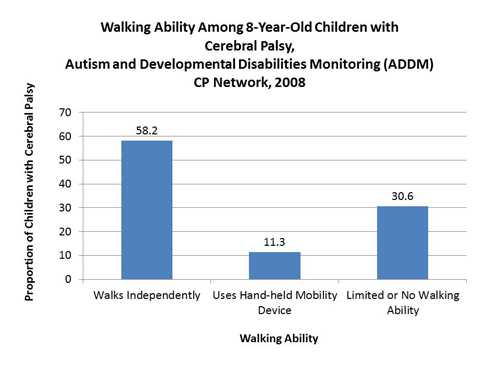- Published on
Cerebral Palsy-- Signs, Stats, and Facts
- Authors
- Name
- Magdeline Gomes
- Role
- Content Writer
As there are various forms of cerebral palsy, with each impacting different body parts, the signs of the disorder may differ. The earliest signs are typically found within the first few months of a child's birth. General symptoms to look out for include:
Developmental delay - late to learn how to do toddler-related movements such as rolling over, crawling, and walking
Abnormal muscle tone (hypotonia: decreased muscle tone, gives a relaxed appearance; hypertonia: increased muscle tone, gives a stiff appearance)
Cerebral palsy is known to be the most prevalent form of motor impairment in children. It is reported that 1 out of every 345 American children receives a cerebral palsy diagnosis. According to statistics, spastic cerebral palsy (linked to stiff muscles) affects 80% of patients with cerebral palsy. The second most prevalent form of cerebral palsy is dyskinetic (uncontrollable body movements). It has been found that males are more likely to suffer from cerebral palsy than females. It is currently unclear why this difference in prevalence between genders exists. Additionally, studies have shown that cerebral palsy diagnoses differed significantly by race. Black infants were found to be the most likely to be affected with the disorder while Asian infants were the least likely. Black newborns have a higher chance of low birth weight, which is primarily responsible for their elevated risk of cerebral palsy. Additionally, Caucasian infants were 20% more likely than Asian infants to receive a cerebral palsy diagnosis.
Although cerebral palsy severely impacts one’s movement, around 50% of children with the disorder have reported having the ability to walk, independently of outside assistance. It has also been found that 1 in 10 children can walk with a hand-held mobility device. It is also worth noting that many children with cerebral palsy are likely to have other conditions, known as co-occurring conditions: 42% of people with cerebral palsy also have epilepsy while 7.5% are also on the autism spectrum.
Cerebral palsy is caused by birth-related factors (abnormal brain development and early brain damage) and is not known to be a hereditary condition. However, environmental factors such as exposure to cigarette smoke can influence gene mutation. Brain abnormalities caused by certain genetic conditions result in the aberrant wiring of nerve cell connections, resulting in cerebral palsy.
